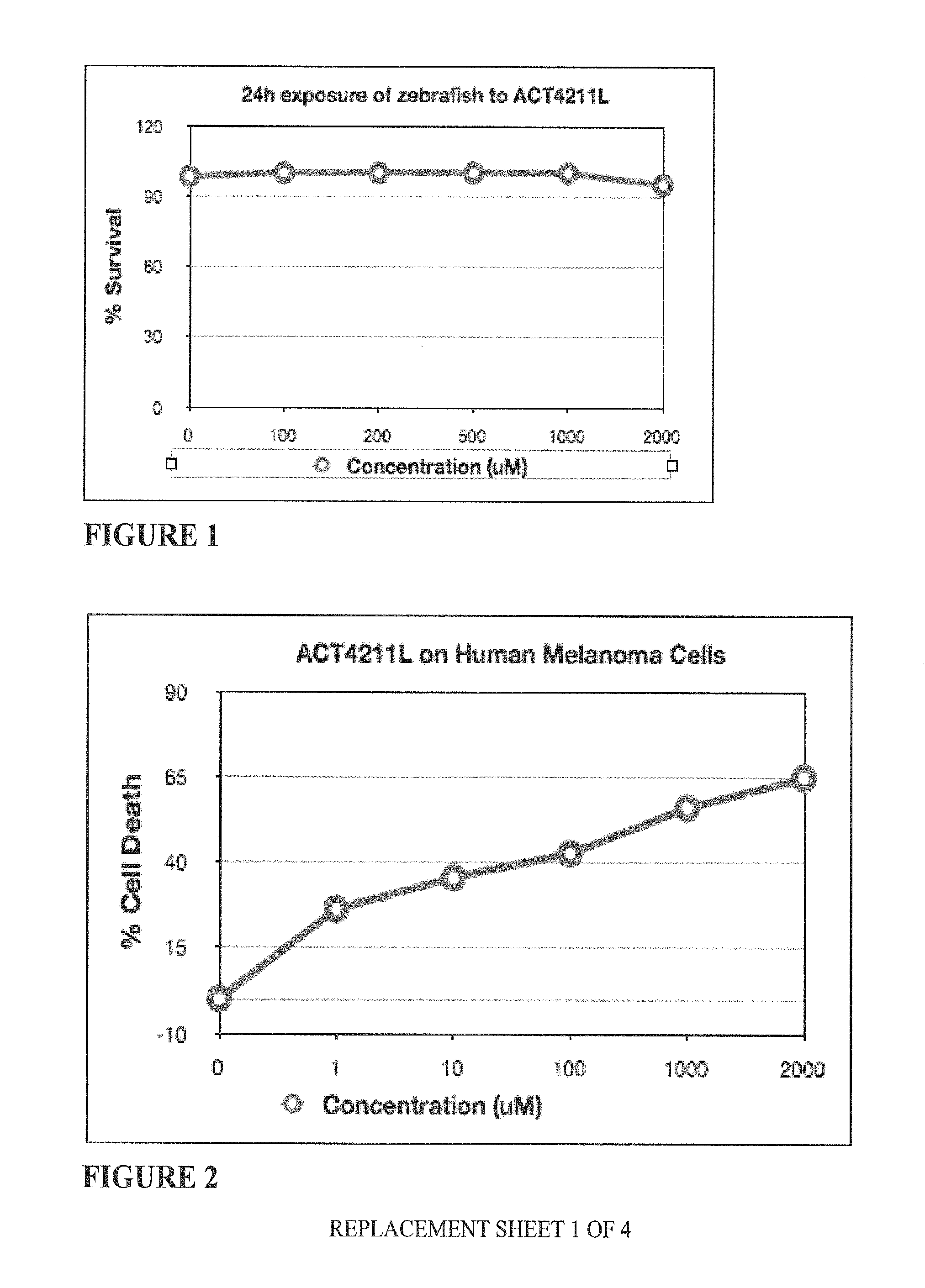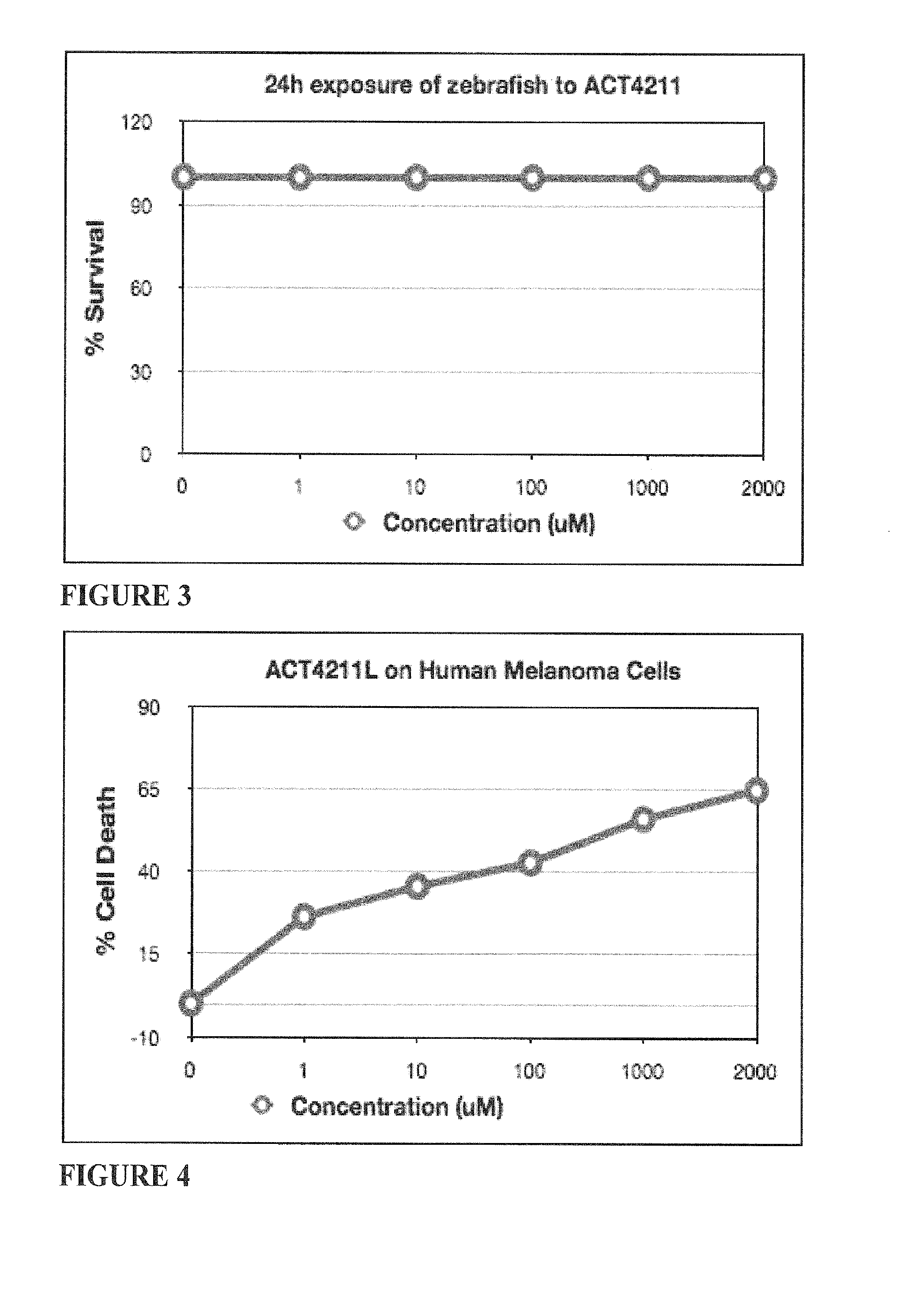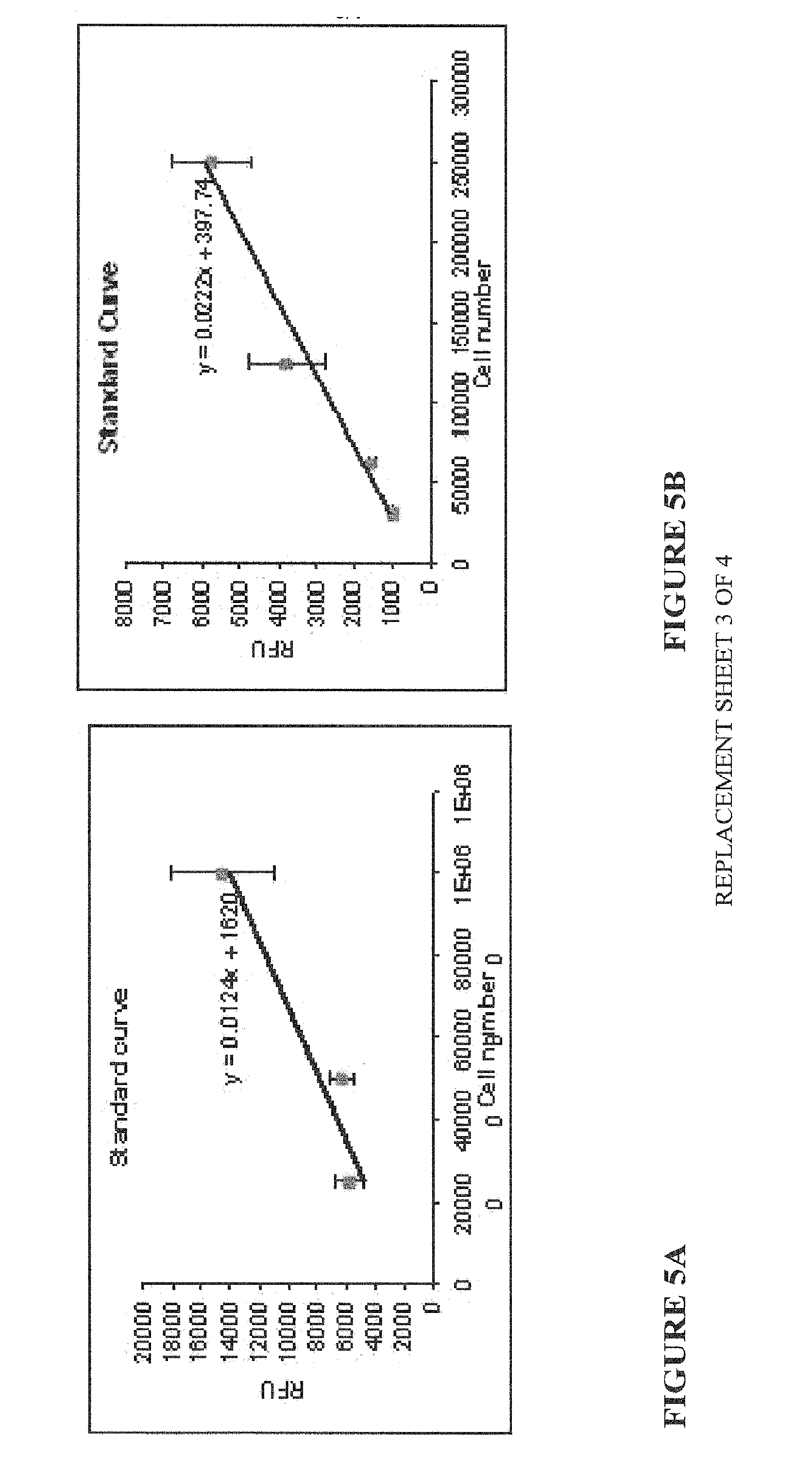Disease detection and treatment through activation of compounds using external energy
- Summary
- Abstract
- Description
- Claims
- Application Information
AI Technical Summary
Benefits of technology
Problems solved by technology
Method used
Image
Examples
example 1
[0100]As an example, consider photodynamic therapy as a treatment for basal cell carcinoma. Basal cell carcinoma is the most common form of skin cancer in humans. Conventional treatment of basal cell carcinoma involves surgical excision, cryogenic treatment with liquid nitrogen, or localized chemotherapy with 5-fluorouracil or other agents. Applying a photosensitizer precursor (aminolevulinic acid or methyl aminolevulinate). A waiting period of a few hours is allowed to elapse, during which time aminolevulinic acid will be taken up by cells, and aminolevulinic acid will be converted by the cells to protoprophyrin IX, a photosensitizer.
[0101]The physician shines a bright red light (from an array of light-emitting diodes or a diode laser) on the area to be treated. The light exposure lasts a few minutes to a few tens of minutes. Protoprophyrin IX absorbs light, exciting it to an excited singlet state.
[0102]Intersystem crossing occurs, resulting in excited trip...
example 2
Toxicity of ACT4211L
[0103]LC50 determination was carried out as described in Lewis, Thomas J. “Toxicity and cytopathogenic properties toward human melanoma cells of activated cancer therapeutics in zebra fish.” Integrative Cancer Therapies 9.1 (2010): 84-92. Briefly, 20 hpf zebrafish (n=30) were treated with ACT4211L at: 100, 200, 300, 400, 500, 600, 750, 850, 1000, 1500 and 2000 μM for 28 hours at 28° C. and lethality was recorded at 48 hpf. Significant lethality was not observed (FIG. 1). No significant lethality was observed in the repeat experiment. No further testing was performed.
[0104]Assessment of cytotoxicity for melanoma cancer cell line WM-266-4. ACT4211L exhibited significant cytotoxic effect on human melanoma cancer cells WM-266-4 in vitro. A dose response effect was observed (FIG. 2); 35.5, 42.7, 56.0, and 64.8% cell death was observed at: 1, 10, 100 and 1000 μM concentration, respectively.
TABLE IResults of LC50 determination.MeanConcentration# DeadMortality# DeadMorta...
example 3
Toxicity of Compound ACT4211
[0105]LC50 determination was made as described in Lewis, Thomas J. “Toxicity and cytopathogenic properties toward human melanoma cells of activated cancer therapeutics in zebra fish.” Integrative Cancer Therapies 9.1 (2010): 84-92. Briefly, 20 hpf zebrafish (n=30) were treated with ACT4211 at: 1, 10, 100, 1000 and 2000 μM for 28 hours at 28° C. and lethality was recorded at 48 hpf. No lethality was observed up to 2000 μM (FIG. 3). No further testing was performed.
[0106]Assessment of ACT4211 cytotoxicity for melanoma cancer cell line WM-266-4: ACT4211exhibited significant cytotoxic effect on human melanoma cancer cells WM-266-4 in vitro. A dose response effect was observed; 57%, 81%, and 87% cell death was observed at: 100, 1000 and 2000 μM concentration, respectively (FIG. 4).
TABLE IVResults of LC50 determination - ACT4211MeanConcentration# DeadMortality# Dead FishMortalityMortalitySurvival(uM)Fish (exp 1)(%)(exp 2)(%)(%)(%)003.300.00.0100.0100.000.00.01...
PUM
| Property | Measurement | Unit |
|---|---|---|
| Fraction | aaaaa | aaaaa |
| Fraction | aaaaa | aaaaa |
| Fraction | aaaaa | aaaaa |
Abstract
Description
Claims
Application Information
 Login to View More
Login to View More - R&D
- Intellectual Property
- Life Sciences
- Materials
- Tech Scout
- Unparalleled Data Quality
- Higher Quality Content
- 60% Fewer Hallucinations
Browse by: Latest US Patents, China's latest patents, Technical Efficacy Thesaurus, Application Domain, Technology Topic, Popular Technical Reports.
© 2025 PatSnap. All rights reserved.Legal|Privacy policy|Modern Slavery Act Transparency Statement|Sitemap|About US| Contact US: help@patsnap.com



